Even though domestic pigs are one of the world’s most familiar animals, few people know much about the world’s wild swine – even though they are fascinating and often bizarre mammals.
Sure, most conservationists know that feral hogs are a highly problematic invasive species globally. And nature documentary watchers and Lion King fans have warm feelings for warthogs.
But did you know there are 18 species of wild pig? (And perhaps more, depending on the taxonomist). Several of them are highly endangered. They include one the size of a house cat and one with arguably the world’s coolest tusks.
Want to meet some wild, wild pigs? Here are five of my favorites.
-
Pygmy Hog
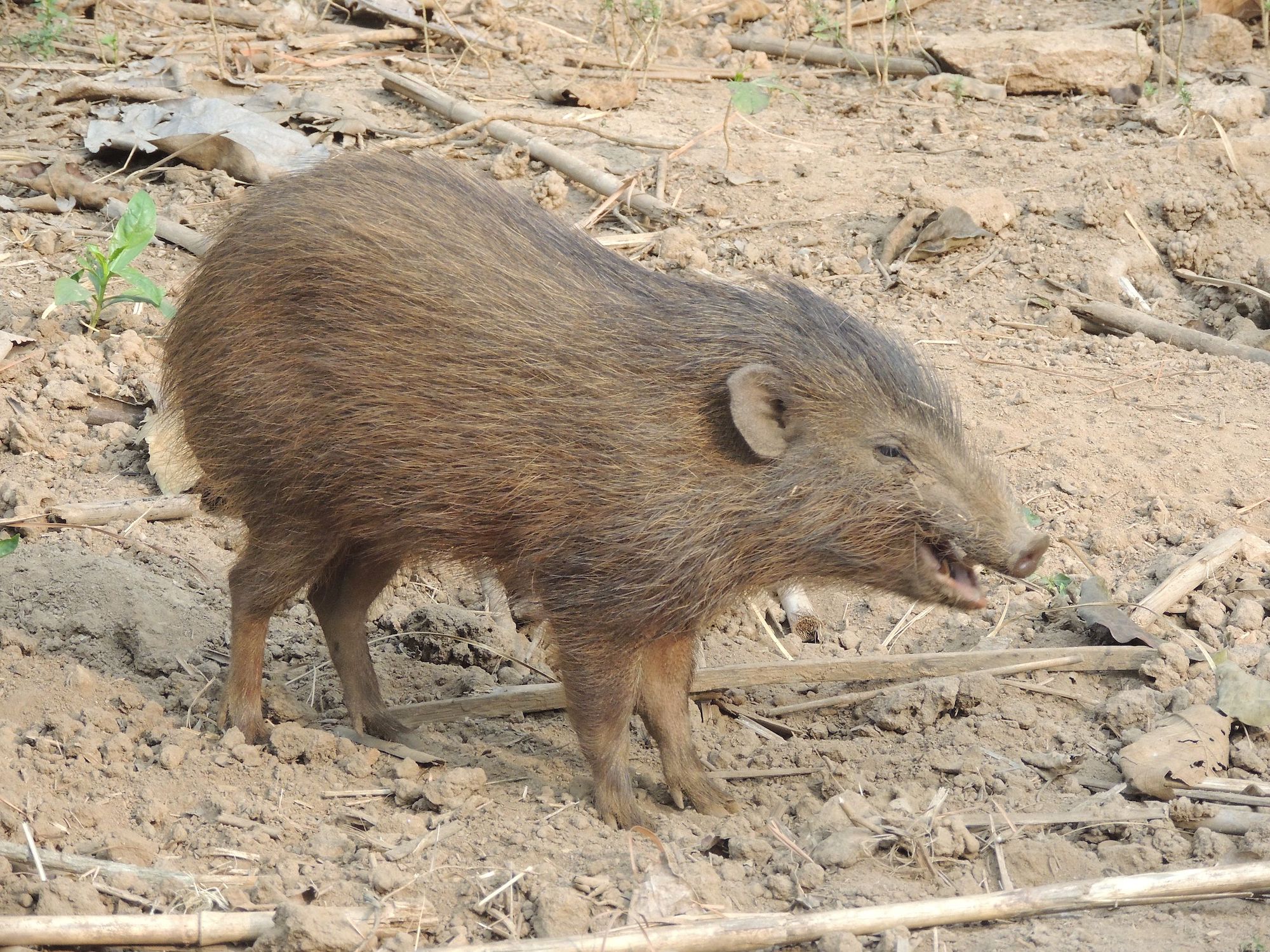
The pygmy hog (Porcula salvania). © A. J. T. Johnsingh, WWF-India & NCF / Wikimedia Commons Potbellied pigs are a periodic pet fad in the United States, and I often hear people refer to them as “miniature pigs.” They are actually a breed of domestic pig. Here’s the true miniature: the pygmy hog, which tops out at 12 pounds and stands only about 7 inches tall.
The pygmy hog is also one of the world’s rarest mammals. By most estimates, there are only 250 left in the wild.
The pygmy hog once ranged in tall grasslands across Nepal, Bangladesh and northern India. The conversion of habitat eliminated pygmy hogs across much of their range, and by the 1960s, most believed they were extinct.
In 1971, pygmy hogs were located in Manas National Park in Indian state of Assam, and that remains the sole wild population to this day. In 1996, a captive breeding population was started, and pygmy hogs from that program are regularly released at Manas to augment the wild population. Any isolated population like this faces a precarious existence, and yet the pygmy hog somehow escapes the notice of most wildlife conservationists.
-
Babirusa
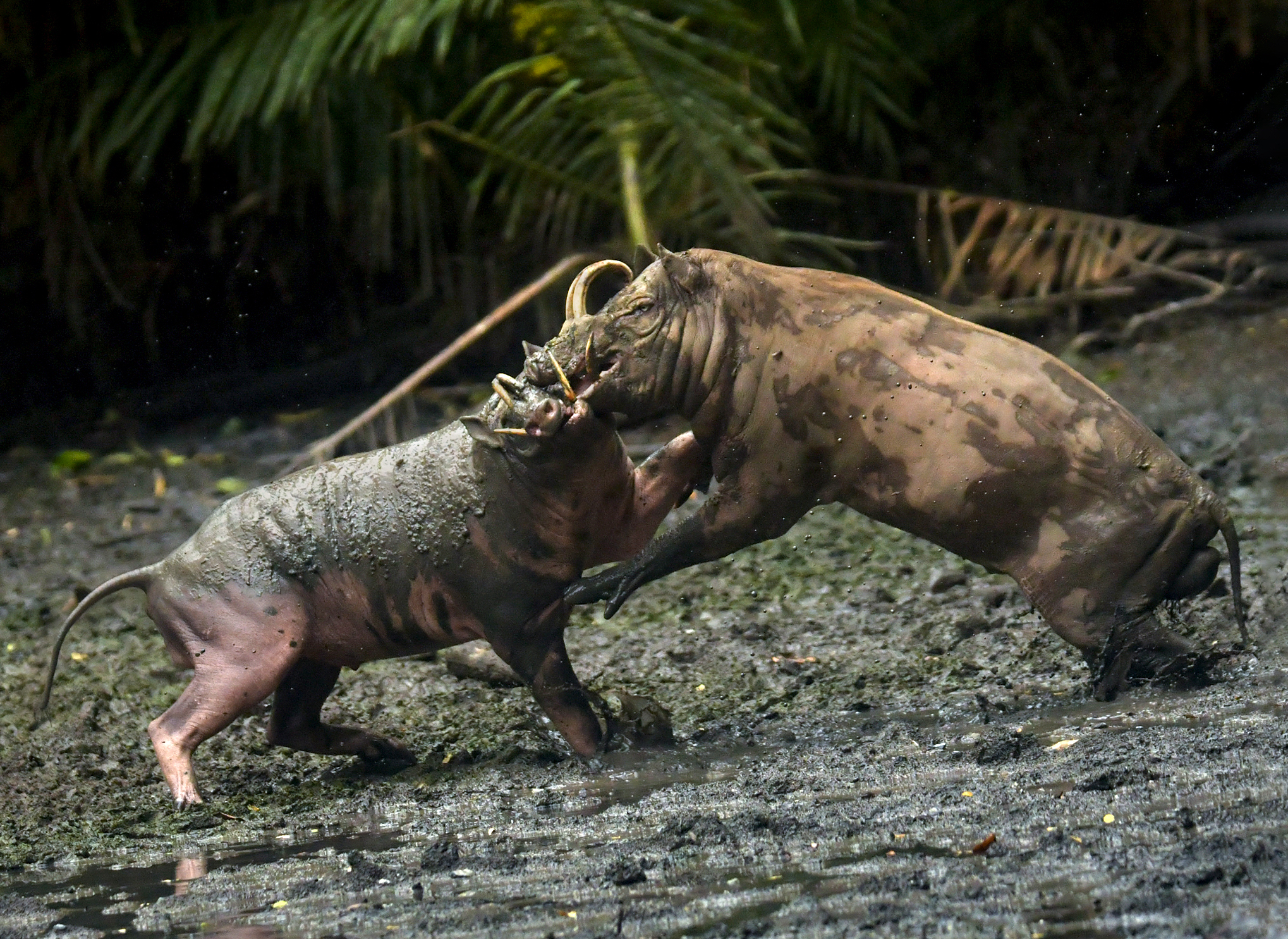
Two babirusa fighting. © Meldy Tamenge / Wikimedia Commons Those tusks. Those awesome tusks. That’s the first thing you notice about a babirusa.
Babirusas are found in isolated parts of the Indonesian island of Sulawesi as well as several nearby islands. It roams in large herds in the forest, and is now mainly restricted to protected areas. Current taxonomic thinking is that there are actually 4 species of babirusa.
The tusks are the most notable feature of the animal. Only males have them. The two upper canines penetrate through the snout’s skin and curve back towards the forehead. The lower canines also grow upwards. The babirusa is the only mammal with vertically growing canine teeth.
Unsurprisingly, babirusa tusks have inspired a lot of folkore and tall tales. A popular story is that those upper tusks, if not worn down, eventually grow back into the skull, killing the unfortunate babirusa. This always seemed more tall tale than biological reality.
But zoologist Darren Naish found at least one example where this actually happened. Ouch.
Much babirusa habitat has been eliminated by deforestation. Deforestation in turn makes babirusas more accessible to poachers. Their habitat is fragmented, threatening long-term survival of these animals. You can read more about babirusas and their conservation in my previous blog.
-
Giant Forest Hog
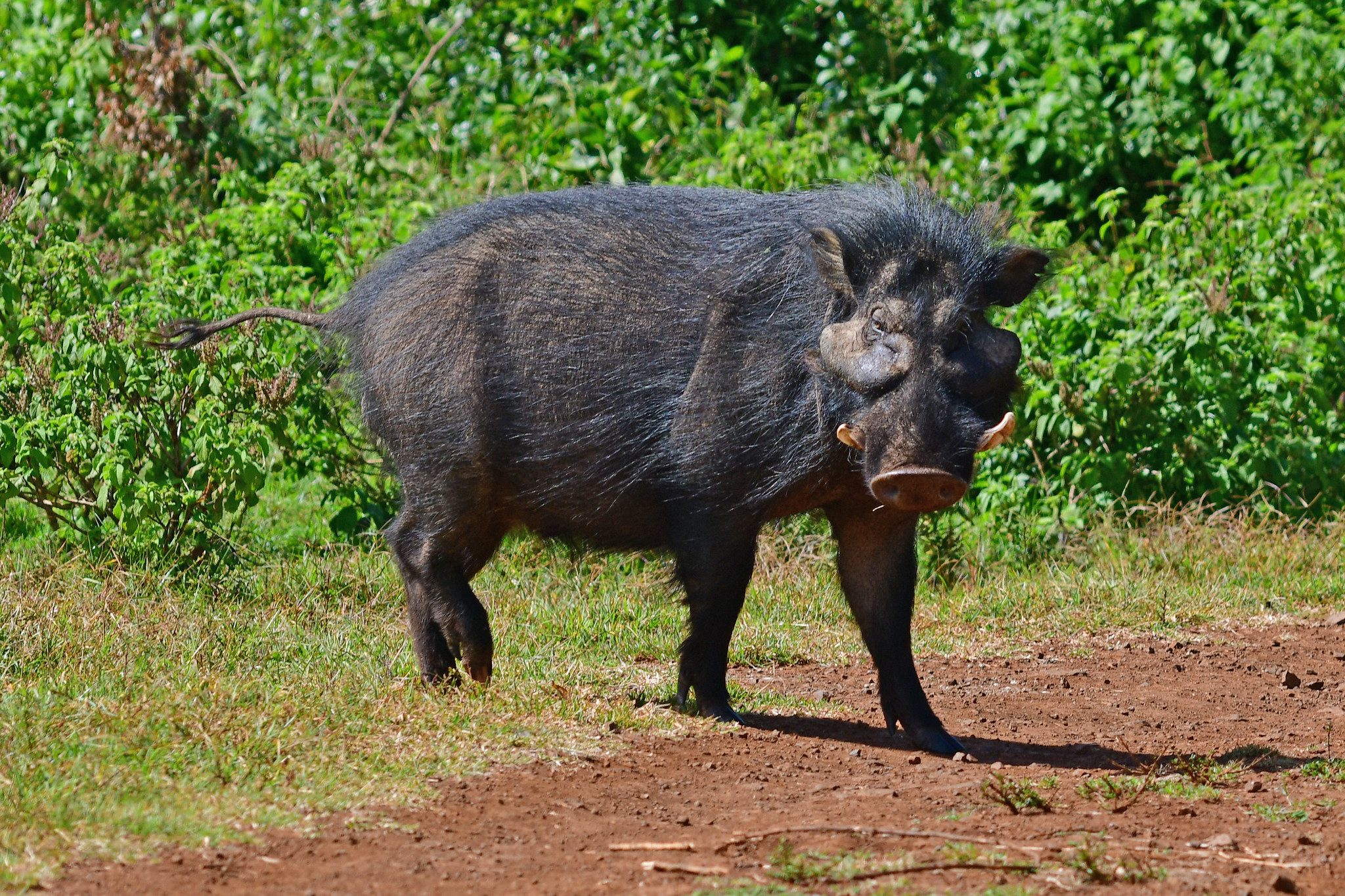
The giant forest hog (Hylochoerus meinertzhageni). © Panegyrics of Granovetter / Flickr The giant forest hog is one of the those animals that has haunted my dreams since I was a wildlife-obsessed kid. They’re striking beasts: the males can reach 600 pounds and have huge “warts” (actually enlarged preorbital glands) on their faces.
The giant forest hog does not tolerate low humidity environments, and it needs dense cover. The bulk of its range is found in the forests of central and western Africa. While few will be lucky to see one, they are photographed at the bais – or forest openings – of national parks in the region.
There also occur locally in humid mountain forests in eastern Africa. One of these populations is at the center of one of most unusual, and little told, predator conservation stories.
The Aberdare Mountains of Kenya is home to forest wildlife more often associated with Central African rainforests, like giant forest hogs and bongos (an antelope species). Through the 1970s, wildlife authorities also used the Aberdares as a release ground for “problem lions” that had been preying on livestock in the ranchlands. The Aberdares lacked a lion population, and the large predators prospered – in part by eating giant forest hogs and bongos.
These animals were disappearing. Sightings had become rare. And so Kenyan wildlife authorities instituted a significant cull of lions in the Aberdares in the late 1990s and early 2000s. While this is covered in a couple of scientific papers, it is very difficult to find detailed information. Wildlife managers killed as many as 200 lions, an operation cloaked in secrecy for probably obvious reasons.
Since then, giant forest hog sightings have increased significantly. As Kenya is a popular tourist destination with an extensive safari infrastructure, the Aberdares is likely the most accessible place for traveling naturalists to see this cool critter.
-
Red River Hog
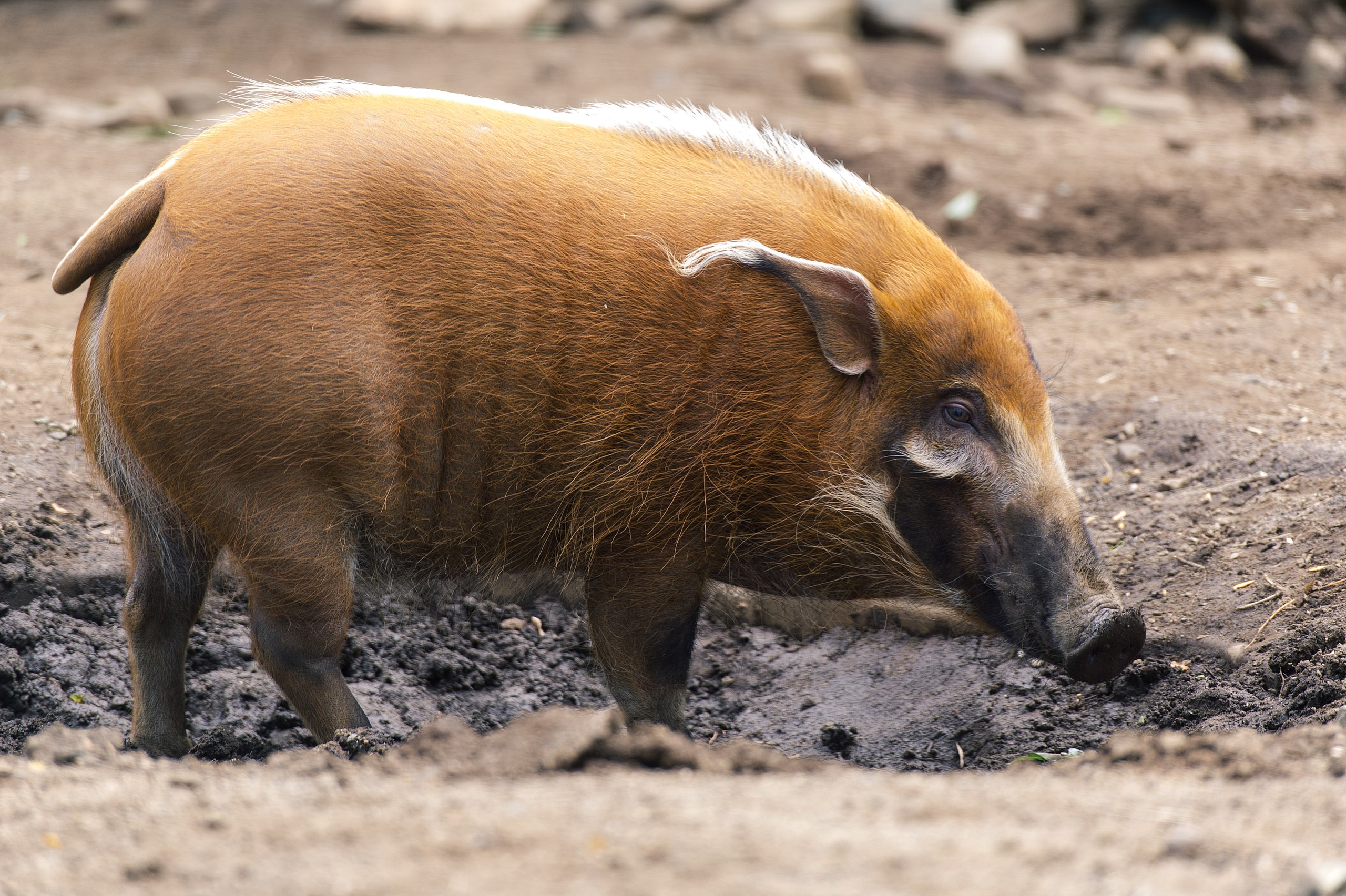
A red river hog (Potamochoerus porcus). © Eric Kilby / Wikimedia Commons The red river hog may be the most beautiful of the wild swine, with a striking red coat offset by a white back crest and a black-and-white face. This is another pig of the African rainforest. It is almost always found very close to swamps or rivers.
According to zoologist and wildlife artist Jonathan Kingdon, males can have dramatic confrontations. “Both animals strut broadside, with bristling fur and erect crests. They champ jaws, grunt, paw the soil and whip their slender tails back and forth.”
An omnivore, the red river hog plows up substantial areas in search of roots and invertebrates.
In 2019, a red river hog was caught in a trap in Texas set for feral hog control. Given the species’ native range, this at first glance was an extraordinarily weird catch. Or maybe not. In Texas, an astonishing array of exotic hoofed animals are kept on game ranches. Some of those non-native animals now have established free-ranging populations.
A quick internet search, in fact, revealed Texas game ranches advertising “hunts” for red river hogs. Given the species’ rainforest habitat needs, it would seem that the red river hog is at low risk for becoming the next invasive species threat. Still, given the havoc feral hogs have wreaked in Texas and elsewhere, it seems at best a questionable idea to have these animals roaming on ranches.
-
Bush Pig
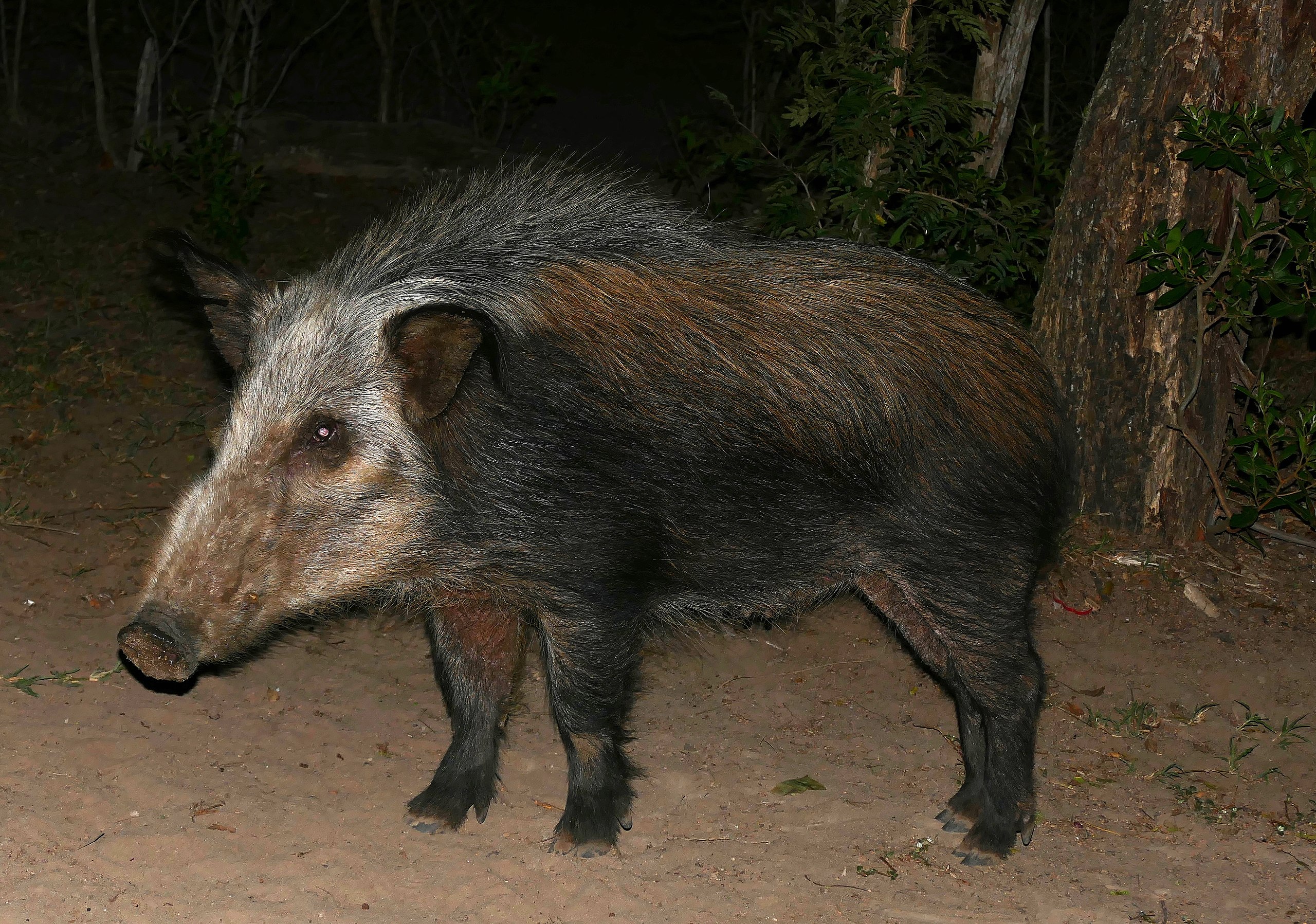
A bush pig (Potamochoerus larvatus). © Bernard DUPONT / Wikimedia Commons Warthogs are a favorite among safari-goers in many of sub-Saharan Africa’s national parks and reserves. They are often not difficult to spot, as they trot across the savanna.
The bush pig is also common in many of the same parks and reserves. And yet few visitors see them, or even know of their existence.
Bushpigs are highly adaptable animals, eating a wide variety of plants and even small prey. They also will scavenge. Unlike many large mammals, they can live in close proximity to humans. In many regions, they are even considered agricultural pests.
They have a stockier, bushier look than warthogs, and have some fascinating habits. They actually build nests of grass for their young, which are described as resembling small haystacks.
But they’re nocturnal, which is why many tourists miss them. Like so many wild swine species, they’re out of sight and out of mind. While the bush pig may be prospering, other species are not so fortunate. Here’s hoping they get the appreciation and conservation attention they deserve.
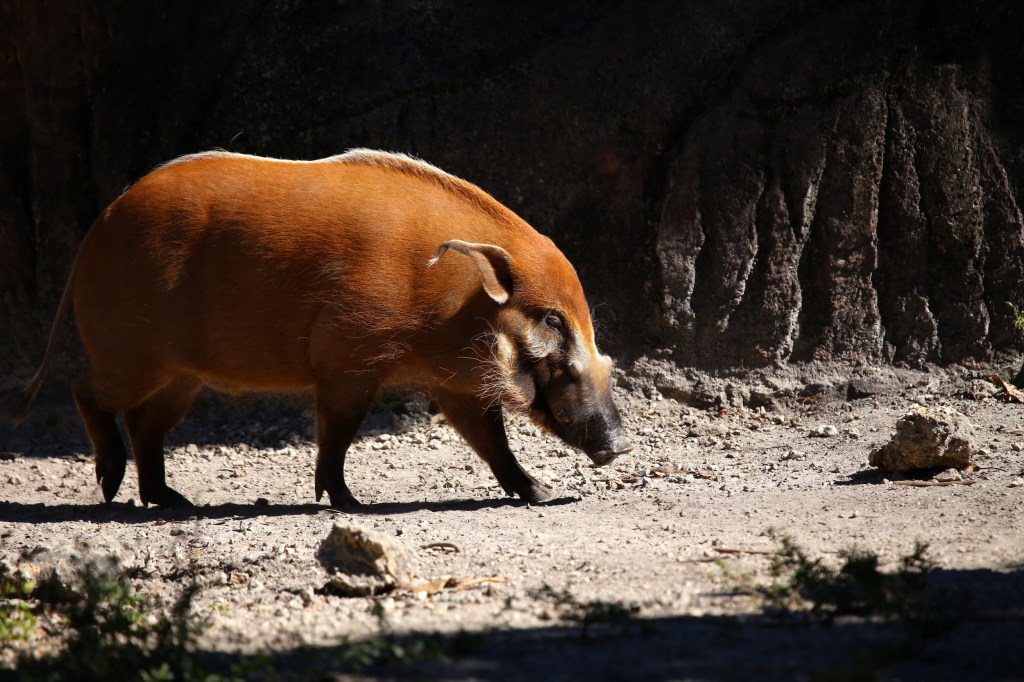



I love pigs, thank you for this!
Hard to summon up warm fuzzy feelings for these creatures (with the exception of the beautiful Red River Hog), which is not to say they shouldn’t be protected!
Thank you for this interesting post.